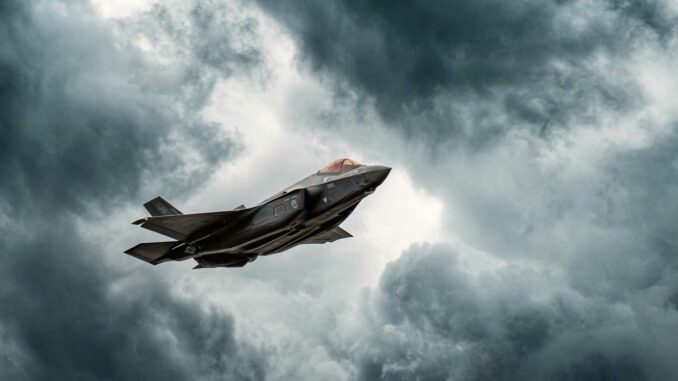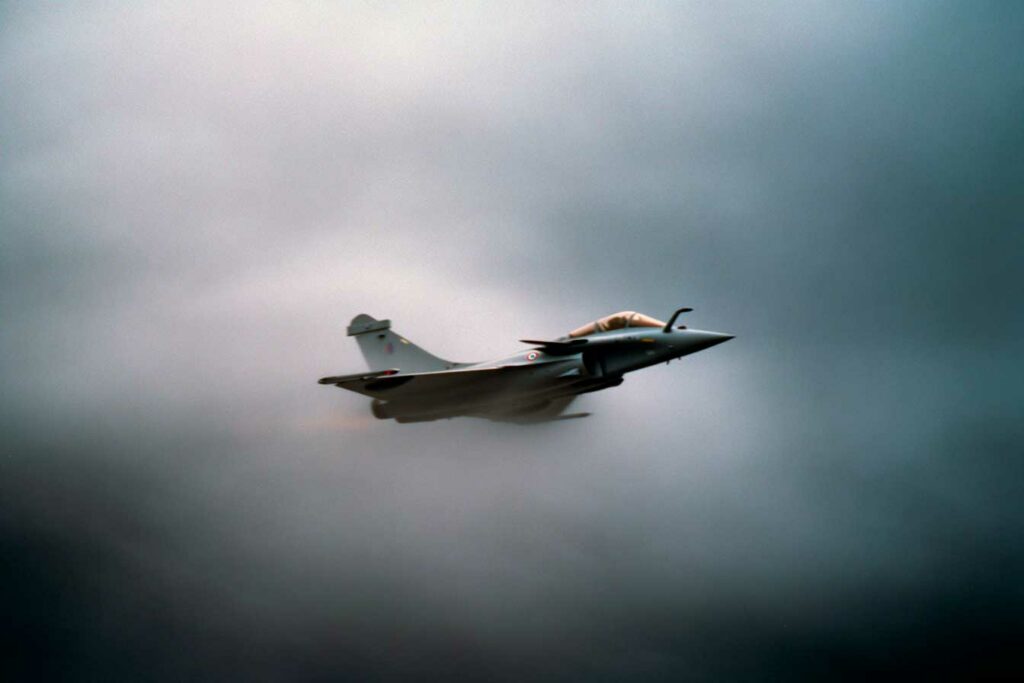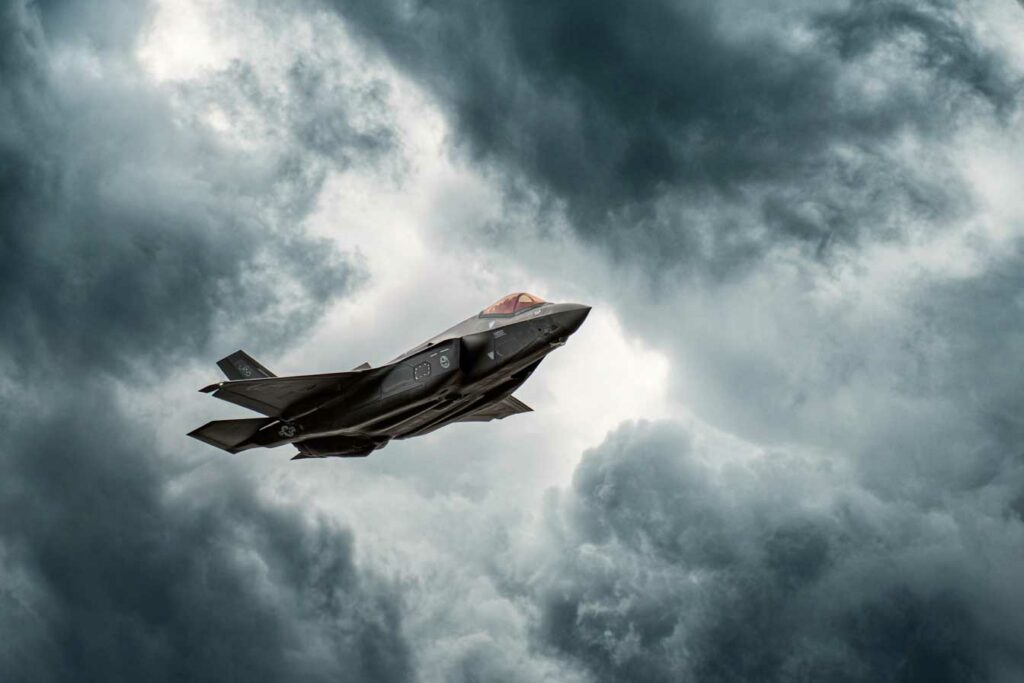
Top 10 most expensive fighter jets: purchase cost, training, and support over 10 years. Methodology, assumptions, figures converted into euros, and analysis of differences.
Summary
Comparing the cost of modern fighter jets requires looking beyond the purchase price alone. The determining factor is the total cost of ownership over ten years, which includes acquisition (airframes, engines, initial armament), training (pilots/simulators/technicians), and support (maintenance, parts, software, fuel). To make the models comparable, we use a standard scenario: a squadron of 12 aircraft, 200 flight hours per year per aircraft, or 24,000 hours over 10 years, with an initial logistics package (tools, parts, test benches) and a basic ammunition package. The figures published vary according to country, configuration (radars, pods, electronic warfare) and industrial offsets. We therefore present ranges, converted into euros, and indicate areas of uncertainty (programs with little documentation). First observation: stealth and/or heavy aircraft (F-35, F-15EX, Typhoon, Rafale) have the highest costs, but also deliver the most comprehensive operational effects. Second observation: the cost per flight hour is as significant as the purchase price; it can double the ten-year bill. Finally, “light” (Gripen E) or “conversion” (Su-35, Su-57) fleets have lower theoretical costs, but with lower performance, support, or technological access. The ranking of the most expensive aircraft mainly reflects avionics complexity, stealth, engine power, and the extent of software support.

The method used and calculation assumptions
To avoid bias, we make clear assumptions. Unit: squadron of 12 aircraft. Activity: 200 hours/year/aircraft (NATO standard), or 24,000 hours over 10 years. “Acquisition” item: airframes + engines + initial parts + ground support equipment (GSE) + basic simulators + initial training (conversion of 24 pilots, 80 technicians) + technical documentation. “10-year support” item: scheduled and corrective maintenance, parts, engine overhauls, software/encryption, avionics updates, fuel, basic training ammunition, but excluding large strategic weapons (unless otherwise stated). Currency conversion: $1 = €0.92 (recent average); £1 = €1.15. The costs per flight hour are realistic averages based on international experience: they vary according to the age of the fleet and the mission profile.
Limitations of the exercise: some classified programs (J-20, Su-57) do not have publicly audited costs; we give conservative ranges. Export contracts (FMS, G2G) sometimes include options/armaments that distort comparisons. Finally, actual availability affects support: a fleet that “holds” its hours better reduces downtime and therefore the need for additional aircraft.
The F-35A: the stealth standard and the weight of software support
Observed unit purchase price (flyaway): $70–85 million (€64–78 million) depending on batch and options. Complete export squadron package with training and initial parts: €1.8–2.4 billion depending on scope. Current observed cost per flight hour: $28,000–35,000 (€26,000–32,000), with a programmatic target of ~$25,000 (€23,000). Over 24,000 hours, “pure” support costs €620–770 million. Added to these figures are software/ODIN updates, F135 engine overhauls, stealth kits (coatings, seals), and sensor maintenance (AN/APG-81, DAS, EOTS), which bring the total ten-year cost to around €2.6–3.4 billion for 12 aircraft, depending on climate, doctrine, and availability.
Advantages: high survivability against layered defenses, superior data fusion, and a complete munitions ecosystem. Disadvantages: heavy software dependency, a complex supply chain, and high labor costs for “low-observable” work. In practice, the F-35A is almost always in the top three most expensive aircraft over 10 years, but also in the top three in terms of military effectiveness delivered.
The F-35B/C: STOVL and naval flexibility, rising costs
The F-35B (STOVL) and F-35C (flat deck) add to the bill. Flyaway: F-35B ~ $90–105 million (€83–96 million), F-35C ~ $85–100 million (€78–92 million). Structural modifications (lift fan, reinforcements, landing gear) and marine corrosion (C) increase costs. Cost per flight hour: B at $32,000–40,000 (€29,000–37,000), C at $30,000–38,000 (€28,000–35,000). For 12 aircraft at 24,000 hours/10 years, the “support” line reaches €670–880 million (B) and €640–820 million (C). Investments in bridges/gangways, bridge simulators, and ship tools inflate the initial basket. Indicative ten-year total: F-35B ~ €3.0–3.9 billion; F-35C ~ €2.8–3.6 billion.
Operational advantage of the B: dispersion and operations from rough runways or LHDs; advantage of the C: endurance and naval payload. The cost differential compared to the F-35A is only justifiable if the posture requires STOVL or carrier-based operation.
The F-15EX Eagle II: “immediate capability” at a high price
Flyaway F-15EX: $85–95 million (€78–87 million). Advantages: large airframe, 13-ton payload, AN/APG-82 AESA radar, open architecture, rapid integration of heavy missiles (LRASM, hypersonic). * Cost per flight hour*: $27,000–32,000 (€25,000–29,000), lower than the aging F-15C thanks to MCO gains. Over 24,000 hours, the support line is around €600–700 million. A complete squadron package (simulators, additional F110-129 engines, EPAWSS electronic warfare, parts) exceeds €1.6–2.0 billion. Indicative ten-year total: €2.3–2.8 billion.
The F-15EX is not stealthy but delivers mass air-to-air and air-to-ground firepower, persistence, and very competitive ammunition integration costs. In a mixed fleet, it can “carry” weapons that others cannot, at the cost of a higher signature.
The Eurofighter Typhoon (Tranche 3/4): demanding performance and maintenance
Recent flyaway price (depending on configuration): $95–110 million (€87–101 million) . Export contracts including training, weapons, and initial support often exceed €4–8 billion for 24–36 aircraft, depending on options. Cost per flight hour: €25,000–35,000 depending on version and maturity (conservative average €30,000). Over 24,000 hours, expect €720 million in “pure” support. Adding spare EJ200 engines, MRO, electronic warfare (DASS), CAPTOR-E AESA radar, the ten-year cost for a squadron easily reaches €2.5–3.2 billion.
Strengths: supercruise, air-to-air dynamics, sensor scalability. Weaknesses: industrial dispersion, long decision-making chains, variable cycle costs depending on the country. The Typhoon remains at the top of the ten-year range.
The Dassault Rafale (F3R/F4): balance between performance and cost, controlled pricing
Flyaway: €80–95 million depending on standard and options. Turnkey contracts include training, simulators, MCO, weapons (Meteor, MICA NG, AASM), and infrastructure. Cost per flight hour: €14,000–20,000 depending on experience; conservative average €18,000. For 24,000 hours, allow for ~€430 million in support. Adding parts, M88 engines (pool), military spare parts, F4.x updates, and test benches, a squadron over 10 years costs around €1.9–2.5 billion depending on the weapons package.
The Rafale combines real versatility (air-to-air, air-to-ground, maritime) with good MCO performance. It remains expensive to purchase, but its lower operating costs give it an advantage over other non-stealth “heavy” aircraft over a ten-year period.
The F/A-18E/F Block III: naval maturity and specific maritime costs
Flyaway: $70–80 million (€64–74 million). The Block III versions add DTP-N, IRST21, wide screens, and airframe reinforcement. Cost per flight hour: $22,000–28,000 (€20,000–26,000). For 24,000 hours, “pure” support ~ €480–620 million. Naval use leads to corrosion and additional inspections (catapults/landings), to be included. The squadron “package” (simulators, GE F414 engines, pods, parts, deck tools) puts the ten-year total at around €2.1–2.6 billion.
Advantages: robust industrial chain, broad experience base, common tools with existing fleets. Limitations: signature, limited stealth scalability, dependence on the deck.
The Saab Gripen E/F: the “light fighter” that optimizes flight time
Typical flyaway cost: $60–70 million (€55–64 million), but with contracts including significant technology transfer, training, and initial support. Cost per flight hour: $7,000–10,000 (€6,500–9,200) according to public data, among the lowest in its class. For 24,000 hours, “pure” support ~ €160–220 million. Add GE F414 engines in pool, simulators, electronic warfare, parts, and a squadron over 10 years is around €1.2–1.7 billion.
The Gripen E is not stealthy, but its controlled cost and modest logistical requirements appeal to budget-constrained forces that want to fly a lot. On the other hand, its payload and range are inferior to the “heavyweights.”
The Sukhoi Su-35S: kinematic performance, MCO uncertainties
Estimated export flyaway (before sanctions): $55–70 million (€51–64 million). Cost per flight hour: poorly documented; estimates $25,000–35,000 (€23,000–32,000) depending on actual availability and parts supply chains. For 24,000 hours, theoretical “pure” support €550–770 million. With the scarcity of parts, international logistics, and AL-41F-1S engines, the actual bill may differ from estimates. Indicative ten-year total: €1.6–2.3 billion, with high logistical risk.
The Su-35S is an air-to-air “show of force” with high thrust and a large radar, but international sustainability has deteriorated, affecting costs and availability.
The Sukhoi Su-57: declared stealth, incomplete economic data
Flyaway: unaudited; speculative ranges of $45–75 million (€41–69 million) depending on sources, often inconsistent with very low production volumes. * Cost per flight hour*: unknown; conservatively estimated at $25,000–$35,000 (€23,000–€32,000) by analogy, but the reality may differ significantly. Over 10 years, a squadron could theoretically cost between €1.5 and €2.2 billion, excluding major uncertainties (Izdeliye 30 engine, sensors, supply chain). Note the absence of verifiable export references, which makes the exercise largely academic.
The Chengdu J-20: strategic capability, financial opacity
No audited export prices or CPFH. Assumptions: a twin-engine stealth aircraft with AESA radar, integrated electronic warfare, and “vertical” state logistics. In Western terms, the total ten-year cost per squadron could exceed €3 billion if F-22/F-35 ratios are applied to a twin-engine fleet. But in the absence of open figures, the J-20 serves here as a “high complexity/high cost” benchmark rather than a classifiable entry.
Indicative ranking by total ten-year cost (12-aircraft squadron)
- F-35B: ~€3.0–3.9 billion
- F-35C: ~€2.8–3.6 billion
- F-35A: ~€2.6–3.4 billion
- Eurofighter Typhoon: ~€2.5–3.2 billion
- F-15EX: ~€2.3–2.8 billion
- Rafale F3R/F4: ~€1.9–2.5 billion
- F/A-18E/F Block III: ~€2.1–2.6 billion (depending on naval use)
- Su-35S: ~€1.6–2.3 billion (high MCO risk)
- Gripen E/F: ~€1.2–1.7 billion
- Su-57 / J-20: cannot be classified with certainty (opacity)
Note: the order of 6/7 may be reversed depending on naval scope and flight hours; 1/2/3 mainly reflect stealth, software, and engine power.
Factors that drive up the bill (and those that drive it down)
Three items drive up costs: 1) software and electronic warfare (AESA radars, EW suites, encrypted links); 2) engines (overhaul cycle, hot parts, logistics flow); 3) cost per flight hour (fuel consumption, tires/brakes, inspections). Conversely, three factors mitigate costs: 1) high-level simulators (reduction in “real” hours without loss of training); 2) engine/parts pooling policies between nations; 3) performance contracts (guaranteed availability, penalties/incentives). . Fleets that fly “smoothly” (simple training missions, reduced ammunition density) cost significantly less per cycle. The addition of long-range weapons (SDB, LRASM, Meteor) quickly increases the initial cost, but also increases the military effect; this must be integrated into the ten-year plan.
The role of flight hours and inflation: the hidden cost
At 200 hours/year/aircraft, a €3,000 variation in the hourly rate changes the support line by €72 million over 10 years for 12 aircraft. This is colossal. Similarly, an average annual inflation rate of 3% on MCO adds ~17% at the end of the period (cumulative effect) . “Tranche” contracts that smooth out increases protect the budget but reduce flexibility. Finally, technical availability (TA) is a factor: gaining 5 points of TA (e.g., from 70% to 75%) is equivalent to ‘increasing’ the fleet without purchasing a 13th airframe. This “structural” effect is worth tens of millions over 10 years.

What these figures really say: delivered capability vs. check to be signed
Saying that a fighter jet “is expensive” makes no sense without linking the price to the capability delivered. The F-35 offers stealth, integrated sensors, and software architecture that reduces cognitive load; its costs reflect this. The F-15EX buys weaponry and endurance. The Typhoon delivers very high-level air-to-air capabilities and increasingly credible air-to-ground options. The Rafale offers versatility at a controlled operating cost. The Gripen E sells “flight hour” efficiency and compact logistics. The Russian and Chinese options raise a fundamental question: beyond the label, what is the real long-term sustainability, what updates are available, and what “smart” munitions are available? A “cheap” fighter that flies little, or without high-level munitions, ultimately costs a lot in terms of military effectiveness.
A final framework for decision-makers
Three ratios guide a sound decision: 1) ten-year cost / total flight hours (€/h, all-inclusive); 2) ten-year cost / probability of mission success (weighted by SAM/AA threat); 3) ten-year cost / ammunition actually fired and replenished. Applied honestly, these ratios shake up fixed comparisons and bring the discussion back to the essentials: paying for effectiveness. An island nation will rely on carrier-based or STOVL aircraft despite the premium; a continental nation will rely on a “heavy + versatile” mix. And all will have an interest in investing in simulators and predictive maintenance: this is the most “ungrateful” budget line… and the most profitable over ten years.
War Wings Daily is an independant magazine.